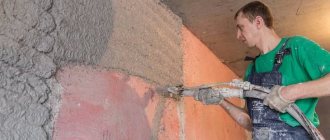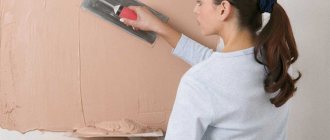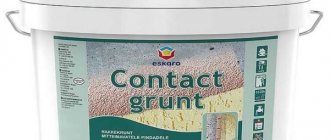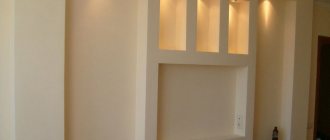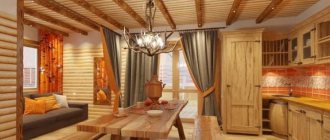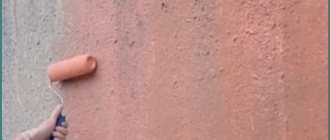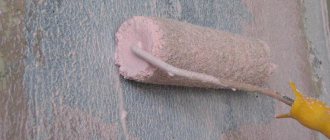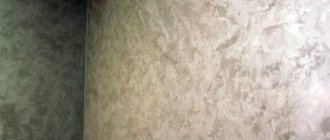Specifications
Let's look at what concrete contact is and why it is needed. A popular primer is supplied by almost every manufacturer of paints and varnishes or leveling mixtures. The developers of the composition are recognized as German technologists from the family enterprise Feidal. In the original version, the pink liquid mass is represented by 40-50% solid/dry matter, the rest binding with functional additives.
The technical characteristics of concrete contact are determined by three groups of components:
- acrylic dispersion is responsible for adhesion indicators;
- quartz sand or analogues provide roughness;
- functional additives that give the coating water resistance, resistance to biological or corrosive damage.
Healthy soil has a neutral acidity level. This explains the absence of chemical reactions between the coating and any plaster/adhesive solutions based on a mineral binder, for which concrete contact is more often used.
Mechanical plastering of walls using concrete contact Source specteh-rzn.speczakaz.info
The consumption of primer material directly depends on the size of the solid filler. So, for the most part, the fraction of grains or crystals is 0.3-0.6 mm. The lower the indicator, the less composition will be needed to treat a given area. The dependence also lies in the processed base:
- high-density monolithic/slab concrete – from 350 grams per sq.m;
- tiles, porcelain stoneware – about 150-250 grams/sq.m;
- oil/alkyd paint with continuous coating – at least 200 grams.
To make it easier to monitor the solidity of the coating, manufacturers add pigment additives to the soil. Pink color predominates, blue is less common. The Tex company has found a more original solution - as the composition dries, it begins to turn red on the surface.
Concrete contact - application
Concrete contact is used for various purposes when performing construction and repair work:
- Indoor treatment of concrete wall and ceiling surfaces intended for plastering work.
- Coatings of facade walls of buildings intended for applying decorative coatings.
- Treatment of the bases on which the finishing tiles will be installed.
- Priming the surface for wallpapering or painting.
The composition is supplied ready for use in sealed packaging. Having purchased a concrete contact, you can begin using it immediately after opening the lid.
It can be applied with a roller, brush or spatula
Purpose
The scope of application of the soil lies in the information about what it is - concrete contact. The acrylic binder has the ability to penetrate deeply. The composition forms a vapor-permeable rough film. Such properties are valued when working with substrates that do not absorb moisture and have a smooth surface. A common option of this type is concrete.
Smooth concrete floor Source yandex.net
The high adhesive ability of the soil ensures a strong connection of materials. To tear off the coating you will need to apply an average force of 100 g/sq.mm. This suggests that the base treated with concrete contact will be able to withstand a large layer of leveling plaster and cladding.
Among other things, due to the filler and the properties of the acrylic component, the dry residue can strengthen the base. The film has a high tensile strength. This is especially true when finishing an old base with microcracks.
As a result, the scope of application of concrete contact extends to the treatment of surfaces of the following nature:
- high-density concrete (panel houses, columns);
- ceramic tiles for finishing without dismantling the coating (two-layer application of primer is recommended);
- dry wooden base to be plastered (other compositions are not suitable);
- metal structures for any purpose without pre-treatment with an anti-corrosion compound;
- plastic or glass surface with correct calculation of the weight load of subsequent finishing.
Priming a painted surface Source snappygoat.com
See also: Catalog of companies that specialize in finishing materials.
Separately, a primer with sand is considered for suitability for brickwork. Not all manufacturers include such a base in their scope of application. The reason is the heterogeneity of ceramic blocks and grout. The latter refers to porous materials that are rarely permissible to be covered with concrete contact.
Acrylic-based compositions can be diluted with water if necessary (not recommended). After drying, the coating can be painted with dispersion paints. Often the surface is decorated using concrete contact. If the composition is not stirred until smooth, then using a brush you can form a chaotic pattern. This way, you don’t have to align the walls with the ceilings, but you can visually transform it for a long time, and additionally protect it from fungus, mold, and corrosion.
Often in the old foundation, finishers are faced with oil paint and chalk. Such finishing is subject to maximum elimination. Next, you should make notches under the plaster or cladding using an ax or a hammer with a chisel, and sand the surface with a coarse abrasive to create roughness.
Notches on a complex base Source couo.ru
After removing grease stains and dust, priming can be carried out, preferably in two layers with intermediate drying.
Among the recommendations you can find the use of contact concrete under putty. However, this material is intended for thin layer application and finishing. The sand contained in the soil will contribute to the formation of scratches and, in general, the composition will be a waste of time, effort, and money. For final leveling, it is enough to treat the base with a dust-removing agent for plaster, a highly specialized primer for metal, plastic, and glass.
Restrictions on use
Most manufacturers and consultants on trading platforms position concrete contact as a universal material. This applies to any soil regarding the nature of the finish with the base, but not suitability for work indoors and outdoors. Samples applicable in both directions exist, but their number is limited. In fact, some soils cannot be used for treating the facade, roof, or basement.
Primer for interior work Source stpulscen.ru
Some options are only permissible for substrates in dry rooms. It is important to first read the instructions on the labels of the cans or buckets.
Due to the high strength of the film, soil is often used to strengthen a loose foundation, for which concrete contact is unsuitable. The composition will penetrate into pores and microcracks, but only superficially. As a result, the finish may fall off the wall or ceiling in a layer under its own weight. Here you need a special strengthening agent with deep penetration.
In order to enhance adhesion and reduce absorbency, any porous substrates must be treated. Soil with quartz sand is not suitable for this, since the binder component will mostly end up in the pores. As a result, the permeability of the breathable surface will decrease to an insignificant extent, and the bond between the filler grains will be insufficient to withstand the declared mechanical load. The solution here is an impregnating agent, which is applied in 2-4 layers with intermediate drying.
Porous materials Source prom.st
Video description
From the video you can get acquainted with the features of various primers:
There are points for which concrete contact is needed, but with limitations. This applies to metal, wood, plastic and glass. The expected result will be obtained only on a mineral surface with the listed inclusions. For a solid base, the option of subsequent finishing with light weight using paints and varnishes would be relevant.
Experts note deviations from the expected when concrete contact is used under self-leveling floors. If you have to work with cement mortar, the adhesion is good, but gypsum does not spread. As a result, cracks and peeling of the coating appear.
Features of the composition
Today GB is manufactured by many companies. These products are not very different from each other. Each primer is based on acrylic, which provides good adhesion to surfaces.
The acrylic base is diluted with cement, sand and other additional fillers. Thanks to these components, the positive qualities of the primer are ensured.
GS is suitable for processing porous and smooth surfaces. It can be processed:
- concrete;
- metal;
- ceramics;
- tree;
- plastic;
- drywall.
Once these materials are coated with GB, they are ready for plastering. Finishes you can use:
- cement;
- lime;
- plaster;
- alabaster.
After priming, even on moisture-resistant surfaces, this plaster will adhere perfectly.
